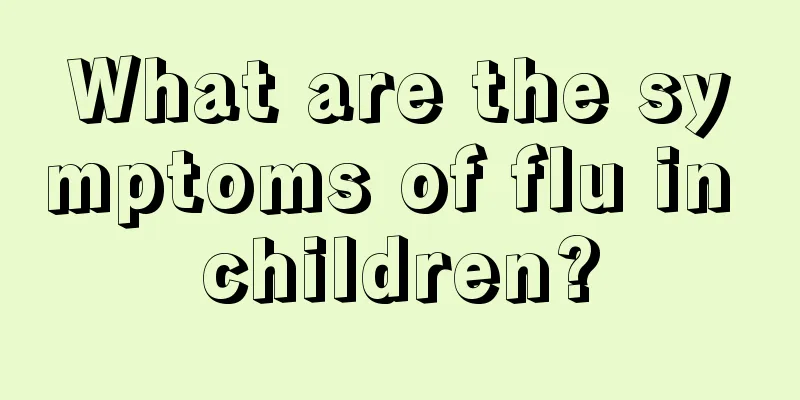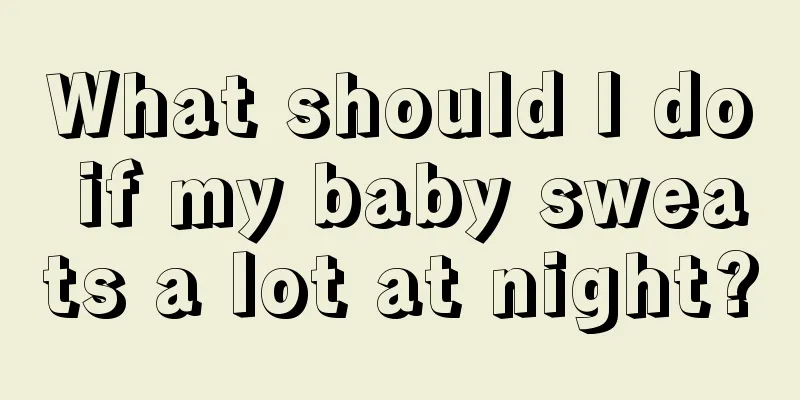What to do if your baby has a persistent low-grade fever

|
If the baby has a low-grade fever that won't go away, the mother will definitely be very anxious, so at this time, you have to find a way to reduce the baby's fever. The most fundamental reason for reducing the fever is to first find the cause of the baby's fever, so that you can prescribe the right medicine. If the low-grade fever occurs frequently, you should be hospitalized for treatment and take the baby to see a pediatrician. So what should I do if the baby has a low-grade fever that won't go away? What to do if your child has a persistent fever Fever is a signal sent by the baby's body, telling parents "I am sick". How to determine whether the baby has a fever? Generally speaking, when the baby's armpit temperature is above 37.5℃ or the rectal temperature or ear temperature is above 38℃, it can be determined that the baby has a fever. The treatment methods vary depending on the degree of the baby's fever. The treatment methods for different degrees of baby fever are different When body temperature < 38.5°C Recommended treatment methods: drink water appropriately, cool down physically, and wear less clothes appropriately When the baby's body temperature is lower than 38.5℃, but his mental state is good, his appetite is normal, and his life and work schedule are regular, parents don't need to be too anxious. Because fever is a natural phenomenon of resisting the invasion of pathogens, if parents insist on reducing the baby's fever, it will weaken the baby's resistance. Generally speaking, if the baby's temperature is below 38.5℃ and he or she is not feeling particularly uncomfortable, there is no need to rush to take the baby to the doctor or use antipyretics. It is also best not to "cover your sweat" as this will make it difficult for the heat to dissipate. A low-grade fever usually lasts for several days. You should always observe your baby's mental state and appetite, and record the number of days with fever (accurately calculate the number of days with fever), interval time, temperature changes and other discomfort symptoms before seeing a doctor for the doctor's reference. When 38.5℃≤body temperature<39℃ Recommended treatment methods: physical cooling, appropriate use of antipyretics, and consideration of going to the hospital If the child's fever does not improve and continues to rise to between 38.5℃-39℃, parents should adopt physical cooling methods such as ice compresses and warm and wet compresses at home. While using physical cooling to help the baby dissipate heat, you can appropriately use antipyretics or fever suppositories to help reduce the fever. What to do if your child has a persistent high fever It is very common for children to have a fever, but if the child's fever is as high as 39°C and remains high without improving, the mother will definitely be very anxious and worried. At this time, mothers need to calm down and take care of their babies in the correct way to reduce their fever as soon as possible. If the baby's armpit temperature is above 37.5℃ or the rectal temperature or ear temperature is above 38℃, it means he has a fever. When 39℃≤body temperature≤40℃ Recommended methods: physical cooling (warm water bath and warm water sponge bath), go to the hospital For babies whose body temperature is above 39°C and who are irritable, warm water baths and warm water sponge baths are the most appropriate ways to cool down. In addition, soaking feet in ginger water and rubbing the acupoints on the soles of feet with ginger are also good ways to reduce fever. If the baby's fever still persists, you need to go to the hospital for treatment immediately. >>It is very common for infants and young children to have a fever. Find out the cause and then send them to the hospital If the doctor prescribes antipyretic medicine for your baby, be sure to use the medicine under the doctor's guidance. Don't be too hasty when giving medicine to a baby with fever. If the fever does not subside after taking the medicine once, you need to wait 4 to 6 hours before taking the medicine again. Moreover, the dosage of antipyretic medicine given to babies should not be too large. |
<<: What should I do if my baby has a low fever of 38 degrees?
>>: Baby has low fever, poor spirit and drowsiness
Recommend
Why is the child's skin yellow?
Newborn babies always have yellow skin, which usu...
Intellectual development of a three-year-old baby
During the baby's growth, parents are most co...
Why do children always have fever at night?
When a child has a fever, the adults are the ones...
What should children eat to get better quickly if they have a fever or a cold?
When we are children, our immunity is very low an...
What to do if a child's hand is cut
Children love to play, and they will often secret...
Postural manifestations of sequelae of cerebral palsy in children
Cerebral palsy in children can cause serious harm...
Will applying ginger powder on the soles of the baby's feet hurt the baby's body?
Applying minced ginger to the soles of the feet i...
White spots on baby's skin
We all know that if there are large patches of wh...
18-month-old baby recipe steps
After the baby is over a few months old, the chil...
What to do if a child has a fever without symptoms
Young children have low body resistance and often...
What causes throat suppuration in children?
Nowadays, environmental pollution is becoming mor...
The three-year-old baby's front teeth are decayed
Tooth decay is most common in children, and the m...
What to do if children have vesicular herpes?
When some children develop herpes, the most impor...
Causes and dangers of childhood obesity
What are the causes and dangers of childhood obes...
How to test the height of a two-year-old baby
The method of testing the height of a two-year-ol...









